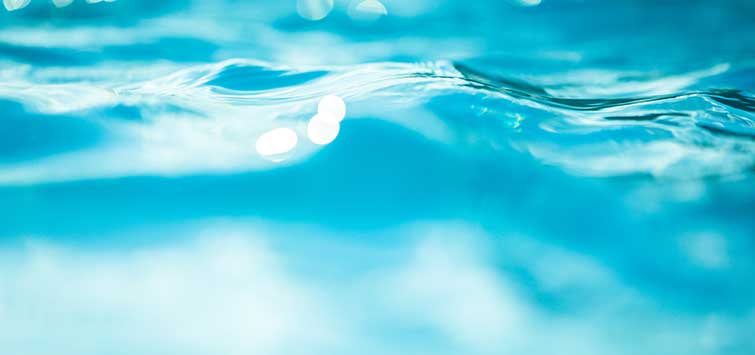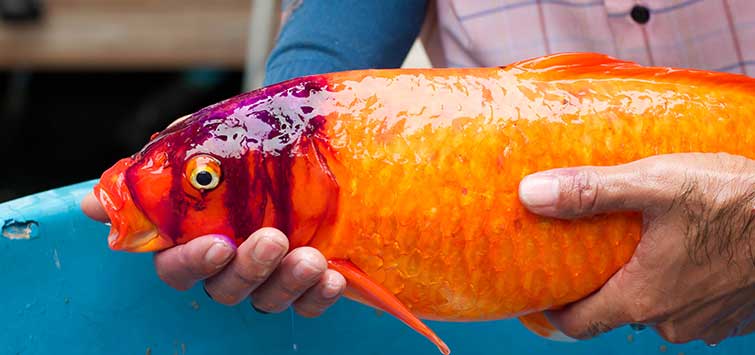Keeping Up with Nitrate
Author: Sara Jackson
Though invisible and odorless, nitrates can have a deadly effect on a tank’s inhabitants, but there are simple and effective methods to lower nitrates in your aquarium. Whether you are a seasoned fish hobbyist or just a beginner, you ought to know what a problem nitrate can be—not only to get rid of, but the harm it can cause your fish.
• Contributing Factors to Nitrate
What Is Nitrate?
Ammonia is the most significant dissolved waste in an aquarium. It is produced by fish wastes, rotting leftover food, and decomposing plant matter. The bacteria in your biofilter convert ammonia first into nitrite and then into nitrate. While ammonia and nitrite are highly toxic to fish, nitrate is much less so. However, as nitrate accumulates, fish will eventually be affected. The level of nitrate cannot be detected directly, as it is invisible and odorless. An algae bloom usually indicates high aquarium nitrate levels, though algae is able to grow in newly set-up tanks with nitrate levels as low as 10 ppm.Measuring Nitrate
You will first need to determine what the nitrate level is in your aquarium by testing the tank water with a test kit. Follow the directions in the kit, and by matching the color of the test with the included color chart, you will know how much nitrate is in the water. Although many aquarists run their tanks with extreme nitrate levels, the ideal is a maximum of 5 to 10 ppm. Levels of 20 to 50 ppm are too high. Freshwater tanks can be at the higher end, with marine fish-only setups at the lower end and reef tanks as near zero as possible.
Many fish will not show any symptoms of nitrate poisoning until the level reaches 100 ppm or even higher, but studies have shown that long-term exposure to sub-critical concentrations of nitrate stresses fish, making them more susceptible to disease, interfering with the growth of young, and decreasing the likelihood of reproduction.
When aquarium nitrate levels rise to completely intolerable levels, fish will become lethargic and may have open sores or red blotches on their skin. It is common for fish kept at high levels to die suddenly, and often when a new fish is added to an aquarium in which the fish have gradually become accustomed to high nitrate concentrations, the new fish quickly dies from the shock.
Need some more help setting up your aquarium? Visit our friends at KaveMan Aquatics for video tutorials and other great resources.
Contributing Factors to Nitrate
An aquarium with a high nitrate level typically suffers from one or more of four principal factors.Overfeeding
Overfeeding is the number-one cause of high nitrate levels in aquariums. Overfed fish produce much more waste than normal, and when more food is given than they can take in, the uneaten food rots and produces even more wastes.Overstocking
Keeping too many fish in a tank also leads to problems with accumulated wastes. More fish means more waste. Most aquariums contain way too many fish, and high nitrate levels are a very common problem in them. A useful rule of thumb promoted by many aquarists is to figure how many fish you think you can put into your aquarium, and then put only half that number in. It is always better to understock your tank, but if you find yourself in the situation of having too many fish, you must either get rid of some or buy a larger aquarium.Dirty Filters
Laxness in cleaning filters often underlies high aquarium nitrate levels. Remember that the media in the aquarium filter merely trap wastes, food particles, and detritus. Until you clean or replace the media, the dirt is simply out of sight, but it’s still adding to the nitrate load of the water.Decaying Plant Material
Even though aquarium plants are natural filters and can help keep nitrate levels down, their dead leaves, if not removed, will decay and produce additional wastes. Even healthy growing plants can lose stems or leaves, and these dead pieces can accumulate on the bottom.Nitrate Solutions
There are various devices and procedures that can lower nitrates in an aquarium. Nitrate-adsorbing filter media and anaerobic denitrifying biofilters will remove dissolved nitrate, but they will do nothing to eliminate the cause of the problem. The simplest solution is a water change. When you remove a volume of water from your aquarium, you remove all the nitrate in that volume. So, change half the water and you’ve removed 50 percent of the nitrate. Now, before you roll up your sleeves and dive right into a thorough cleaning of your aquarium, remember that going from polluted water to fresh, clean water can be just as harmful to your fish as the nitrates themselves. The change in the water chemistry can be a physical shock to your fish. So, if you have a very high nitrate level, start slowly. Lightly vacuum the substrate until no more than 15 percent of the water has been removed. Continue vacuuming the substrate once a day, getting a little deeper into the gravel each time and removing about 10 to 20 percent of the water. Keep testing, and once the nitrate level reaches 5 to 10 ppm, establish a maintenance routine that will keep it there.High Nitrate Prevention
To prevent high nitrate levels, the underlying cause of “Old Tank Syndrome,” you will need to perform regular maintenance and water changes. If you ignore this care, your nitrate will rise, and your fish will suffer.Daily Maintenance
Feed your fish sparingly. Make sure they finish their food in two minutes or less. Instead of feeding your fish one large amount of food once a day, try feeding them smaller amounts two or three times a day. Don’t overcrowd your aquarium. If careful feeding still leaves you with high nitrate, you probably have too many fish for your setup. Do a quick inspection every day. Remove any sources of decomposition: neglected food items, dead fish or invertebrates, and dead or dying plant leaves and stems.Weekly Maintenance
You will need to perform regular water changes. The minimum schedule should be weekly, but more is often better! Large changes of 50 percent or more are much more effective at keeping wastes sufficiently diluted. Sometimes tap water contains levels of nitrate that are unacceptable for the aquarium. If that is the case, you either need to use a water purifier such as a reverse-osmosis unit, or you’ll have to buy suitable water for your aquarium. Of course, such large changes are not generally possible with a marine tank, though they work very well. This is why saltwater hobbyists often rely on nitrate-reducing systems like live rock and deep sand beds, and it is why reef aquarists usually keep only a few small fish that are lightly fed to minimize waste production. Check your filters regularly. If you do not have a dedicated biofilter and rely on the bacterial colonies in your mechanical filter medium, replace only part of the medium at each cleaning. However, if the medium is seriously matted and plugged, a gentle cleaning in a bucket of tank water will remove most of the decomposing gunk without damaging the biofilter. In fact, it will increase biofiltration capacity because of the increased flow of oxygen-rich water through the medium.Plant Filtration
A heavily planted tank is the most natural way to have low nitrate levels, since plants will utilize much of the ammonia, nitrite, and nitrate produced in the aquarium. This is the principle behind growing and harvesting macroalgae in a saltwater sump system. The rapidly growing algae remove wastes from the water, and the regular removal of some of the algae permanently removes those substances from the system. Mangrove plants are especially popular with marine aquarists, but they are equally effective at removing wastes from fresh water. These plants are rooted under the water, but they must grow out of the water. Remember, though, that plants can only utilize a certain amount of wastes, which is why planted tanks, like reef setups, are typically lightly stocked with fish. Although it takes effort to lower nitrates in your aquarium, the reward of watching healthy, beautiful fish swimming tranquilly in a tank in your living room far outweighs the work that goes into assuring the health and longevity of your fish.
See the full article on TFH Digital http://www.tfhdigital.com/tfh/201102#pg87

.png?h=595&iar=0&w=2781&hash=5FD5E69473BCC22199FBFA2FB71B6033)



